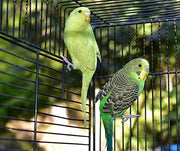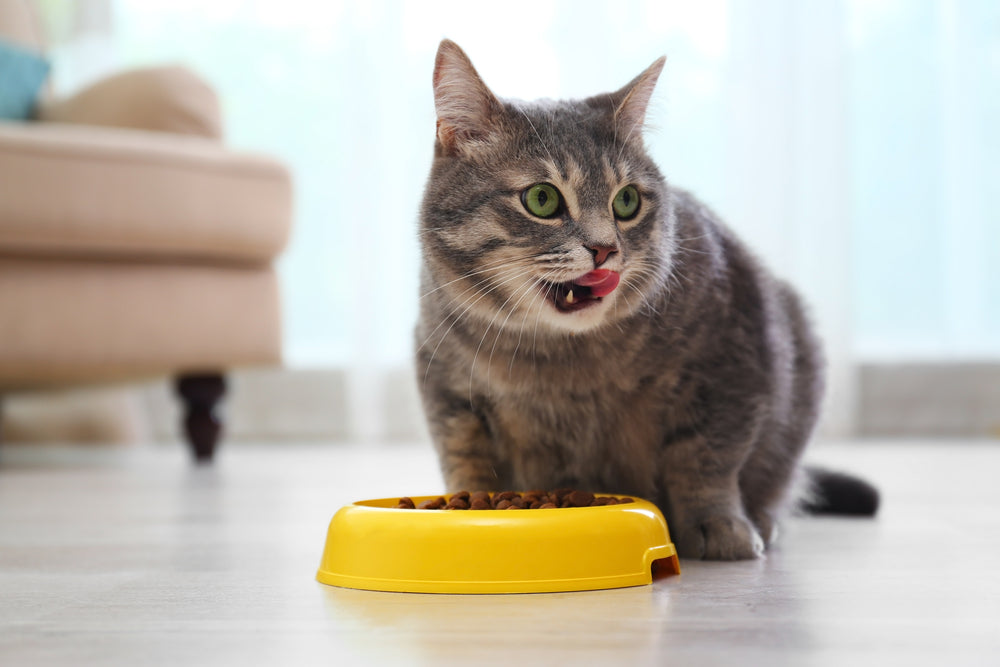Bird Cage Cleaning: Daily, Weekly, and Monthly Bird Cage Maintenance

A key factor in keeping your bird healthy is to make sure their cage, play stands, and other accessories are regularly cleaned. Once you have a routine, incorporating it into your daily, weekly, and monthly schedule is easy and you get the satisfaction of knowing your bird is healthier and happier. When you’re cleaning your bird’s cage, this is the best time to see if there are any signs that your bird isn’t feeling well. Look for hazardous conditions that could be in the cage, then remove or correct them. Pay attention to these things:
- Their food; has the normal amount been eaten?
- Toys; are any frayed or need to be replaced?
- The cage; is the cage still in good shape?
- Feathers; are there any in the cage, do they look normal?
- Droppings; are they normal in appearance and number?
Daily Liners: The liner of the cage should be replaced every day. Newspaper and other paper liners are easily replaceable and allow you to see your birds’ droppings. For smaller birds placing several layers down and removing the top layer is an option. Just make sure that the remaining liners are clean, and nothing has seeped through.
Dishes: Food and water dishes should be cleaned every day with hot water and soap then thoroughly dried. Make sure the dishes are dishwasher safe if you choose to use one. Food bowls should be completely dry before replacing as bird food can mold quickly. Having multiple sets of dishes may be more convenient for you. If you use a water bottle, use a bottle brush to clean.
Accessories: If you have a birdbath in the cage this should be cleaned every day with hot soapy water and a bird-safe disinfectant. Accumulations of droppings on perches or toys should be removed.
Surrounding areas: Sweep or vacuum the floor to remove seeds, hulls, feathers, and other debris. Placing a plastic liner under your bird’s cage will save time while cleaning and will keep your floors clean. Weekly/monthly Depending on the type and number of birds you have, the cage size, and how often your birds are in their cage you may have to clean more or less often. Most cages should be deep-cleaned once a week, but for some smaller birds, a monthly cleaning is enough.
Follow these steps for your cleaning routine:
Cleaning Supplies: Have all your supplies handy in one place. Keep them in an easy-to-carry tote or in a nearby cabinet. Your supplies should include:
- Cage liners
- Paper towels or cage wipes
- Cleaning Cloths
- Bird-safe disinfectant
- Sandpaper and Scrub brush or an old toothbrush
Step 1: When cleaning, keep a trash can nearby. Remove your bird from their cage and place them in a safe and secure location.
Step 2: Remove accessories and toys. Remove seeds and loose drippings from the cage and scrub the cage with hot soapy water. Many people will do this in a tub or shower to help wash it. Rinse the cage well with plain water, soak with soapy water, rinse the soap out, then let dry completely before replacing toys.
Step 3: Clean toys and perches. Remove droppings from all toys and accessories with bird-friendly cleaner. Sandpaper can help remove these from wooden accessories. Just like the cage, wash, rinse, and disinfect. Some toys are dishwasher safe, and some ropes may be able to go into the washing machine. All accessories should be dried completely before being placed back in the cage. Having multiple sets of perches can save time while they are being dried. Discard any toy that does not come out clean or is broken.
Step 4: Clean the surrounding area. Plastic coverings on the floor should be washed and disinfected. Walls should also be checked as food or other objects may have been flung out by your bird.
Step 5: Reassemble the birdcage. Once the cage and accessories have been dried off place all items back in the cage. Put in a clean liner, fill the food and water dishes, then bring back your bird into their clean home.
Source:
Previous article

Next article

Related posts
View all-

Wet Vs. Dry Cat Food: Which is Better?
As a caring cat owner, you always want the best for your furry friend, especially with their food. You typically have two choices: dry cat food in a bag or canned wet food. Whether you've just brought home a new kitty or are looking to transition to a new food, the decision process can be overwhelming, and understanding the impact of each on your cat's diet is essential. Read Article -

Celebrate National Pet Week: Fun Ideas to Celebrate with Your Pet
National Pet Week is right around the corner, so it's time to plan how you're going to celebrate! While we're sure you celebrate your pet all day every day... Read Article -

5 Simple Tips to Make Sure Your Cat Drinks Enough Water
Ensuring your cat stays hydrated is important, but it can be challenging since many cats don't drink enough water. Dehydration can lead to kidney disease and other health issues. Fortunately, you can encourage your cat to drink more with a few simple changes. Read Article



